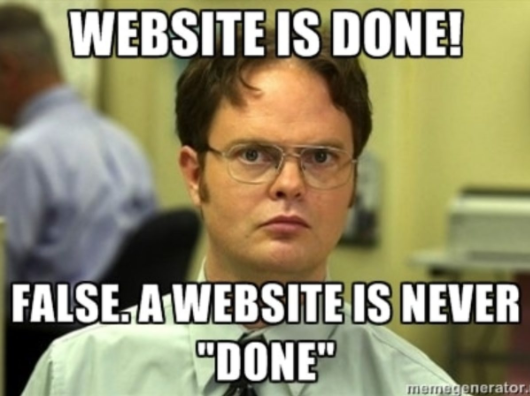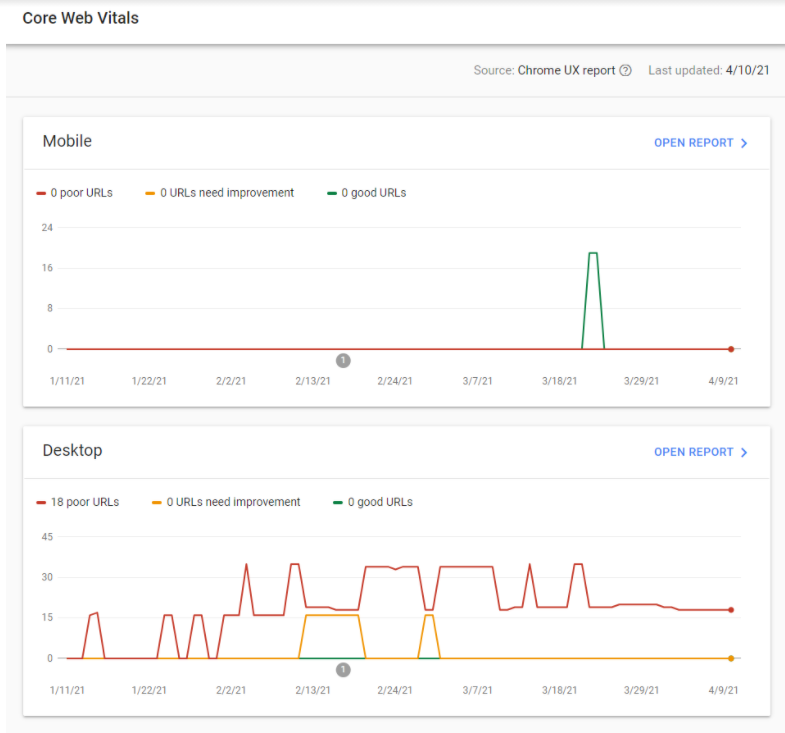Are you still thinking about whether your website should be mobile responsive? That’s so 2015!
Google is now looking at the overall page experience, and it’s closer than you think.
In less than 30 days, the Google search engine will roll out a new set of signals called Core Web Vitals that will take into account your website’s page loading speed, responsiveness, and visual stability.
In this WebBuzz guide, we’ll demystify what Core Web Vitals are and help you understand their effects on your digital presence and overall website rankings.
What Are Core Web Vitals and Why Local Australian Businesses Should Prepare?

Is Google punishing Australia for passing the News Media and Digital Platforms Mandatory Bargaining Code?
Nope, because the Core Web Vitals will be rolled out globally and has no connection to the controversial digital media law.
But these page experience signals will become important ranking factors, especially for local websites.
The good news is you probably don’t need to implement a major revamp in your website if you are already providing an excellent on-page experience for your visitors.
This is basically the purpose of Core Web Vitals. These are page experience metrics to help Google Search analyse the quality of experience people will get when they visit your website.
For instance, Google’s new algorithm will figure out if your website is loading fast enough to encourage people to stay.
SUPER IMPORTANT TIP # 1: If your page is not loading fast, your website will be penalised via lower ranking in the Search Engine Results Page (SERP), which can affect the volume of organic traffic you normally receive.
Google’s new “page experience” signals have the following factors in assessing your website:
- Mobile-responsive – Your page should be optimised for smartphones
- HTTPS – Your page should be served in HTTPS
- Secure browsing – Your page should not contain any malicious software or present misleading content
- Non-intrusive – Your page should not include any element that covers the main content
- Core Web Vitals – Your page should load fast, maintains visual stability, and interactive
Through its Central Blog, Google announced that they will be adding more factors soon, but for now the updated algorithm will focus on the on-page experience.
Updating Your Website? Watch Out For The 3 Core Web Vitals Metrics
Seriously, when was the last time you updated your website or digital presence?
If it has been ages, now is the perfect time to revisit your site and be sure to factor in these Core Web Vitals:
1. Page Loading: Largest Contentful Paint (LCP)
LCP covers the perceived load speed of your website or simply the time it will take for your page to display content that is important for your visitor.
No matter how useful or interesting your content is, if it doesn’t load quickly, your page will look weird which could lead to people thinking there is something wrong with your site, or worse, they’re not in the right place.
What’s the ideal page load speed?
2.5 seconds.
Google figured out that a page load that is slower than this benchmark causes people to bounce (clicking the return button in the browser).
Remember, web pages display content in phases. So, if the final elements above the fold loads, this will be your LCP.
To put it simply, a slow LCP could mean a lower ranking.
SUPER IMPORTANT TIP # 2:
The businesses at HIGH RISK of adverse consequences from the Google update are those with websites with:
- Bad, out-dated design
- No mobile responsiveness
- Slow page load
- Poor user experience (UX)
2. Visual Stability: Cumulative Layout Shift (CLS)
CLS measures the frequency of sudden changes in the page layout and overall visual stability.
Google will now favour page layouts that provide the best experience for users.
For example, have you ever visited a website that keeps on bumping the text that you are reading because videos, images, or ads keep on loading?
Or perhaps you clicked on interesting content but suddenly a button appears and you end up clicking that instead?
These are common examples of bad user experience, and Google will start tracking these issues.
Ideally, your website’s CLS score should be zero, which signifies that your website is stable and not intrusive.
3. Interactivity: First Input Delay (FID)
FID covers the responsiveness of your website and measures the time between the site visitor’s interaction with the web page and when the page can act on that interaction.
Let’s say a user is completing a form on your website to download free content (ebook, guide, estimates, etc) and then hit the submit button. How long will it take for your website to start processing the request?
FID measures the time it will take the user taking action and the website responding to that action.
This is basically a way for Google to quantify the disappointment of page visitors.
How would you feel if a website takes forever to let you download a freebie?
This is a crucial user experience factor because it can affect your process of getting an important lead date or even processing a sale.
People who choose to act on your website are more likely to have a high interest in your products and services, and it is unfortunate to lose them just because of a faulty submit button.
Which Websites Are Affected by Core Web Vitals Update?
SUPER IMPORTANT TIP # 3:
Specific websites that are encouraged to update in view of the core web vitals update are the following.
- E-commerce websites
- Real estate websites
- Mortgage websites
- Financial adviser websites
- Corporate websites
- Doctor’s websites
- Lawyer websites
If you want your website to rank high in Google SERP, you should definitely update your web pages and make sure that they follow ideal core web vitals metrics.
But beyond SEO, it is ideal to improve your web design to provide a great user experience to your visitors.
Bear in mind that the purpose of th[is 2021 algorithm update is to help users find the most relevant and quality sites on the web.
So Australian websites should work to provide the best experiences and ensure that visitors will find the information they are looking for.
I think the focus here is to simulate an in-person experience online.
As more and more local businesses are affected by COVID-19, online stores and digital experiences will continue to boom
To stay in the game, it is up to your to provide that in-store experience to your visitors.
How to Check Your Website’s Core Web Vitals
I’m a big fan of these reports’ transparency because Google makes it easy to locate problems and fix them.
One reason why website owners freak out whenever there’s an algorithm update is they think fixing the issues is shrouded in mystery.
This is usually not the case because Google generally makes it easy to locate the problem and resolve it.
To check your current score, head to your website’s Google Search Console. You’ll see that the Speed Test is now replaced with “Core Web Vitals”.
If you click it, the console will display a report for both mobile and desktop and bring up a list of good URLs, URLs that need improvement and poor URLs.
If your website has many poor URLs, it is an indicator that they are slow to show the most important content, the layout is not stable, or they’re not fast enough to respond to user actions in the ways outlined above.
WebBuzz Can Help You With Core Web Vitals Update
SUPER IMPORTANT TIP # 4:
If your website is impacted by the Google update, here are the likely effects you will experience:
- Reduced Google search traffic
- Lower visibility in search engine results pages (SERPs)
- Worsening of your ‘SEO’
- Less online enquiry for your business
Core Web Vitals are not just a trend.
Google has been promoting user experience for the past five years, and the roll out of the new update sends a signal that it is serious about user experience.
The pattern is similar to when Google incentivised securing websites with SSL certificates. For years they recommended site owners do it, then they announced rewarding sites with a small rankings boost which completed the rollout. Now the amount of secure sites on the internet has jumped from just over 40% in 2016 to over 80% today.
The longer you wait to update your website’s UX, the higher the chance your online presence will crumble.
Whatever your industry or type of website, Webbuzz can help you create a page experience that your target audience will love. Call for a chat 1300 41 00 81.











